Renovating a bathroom? Here's how to get the best results
Renovating a bathroom well requires careful planning and the right combination of style and practicality. We explain what's involved and how to get it right
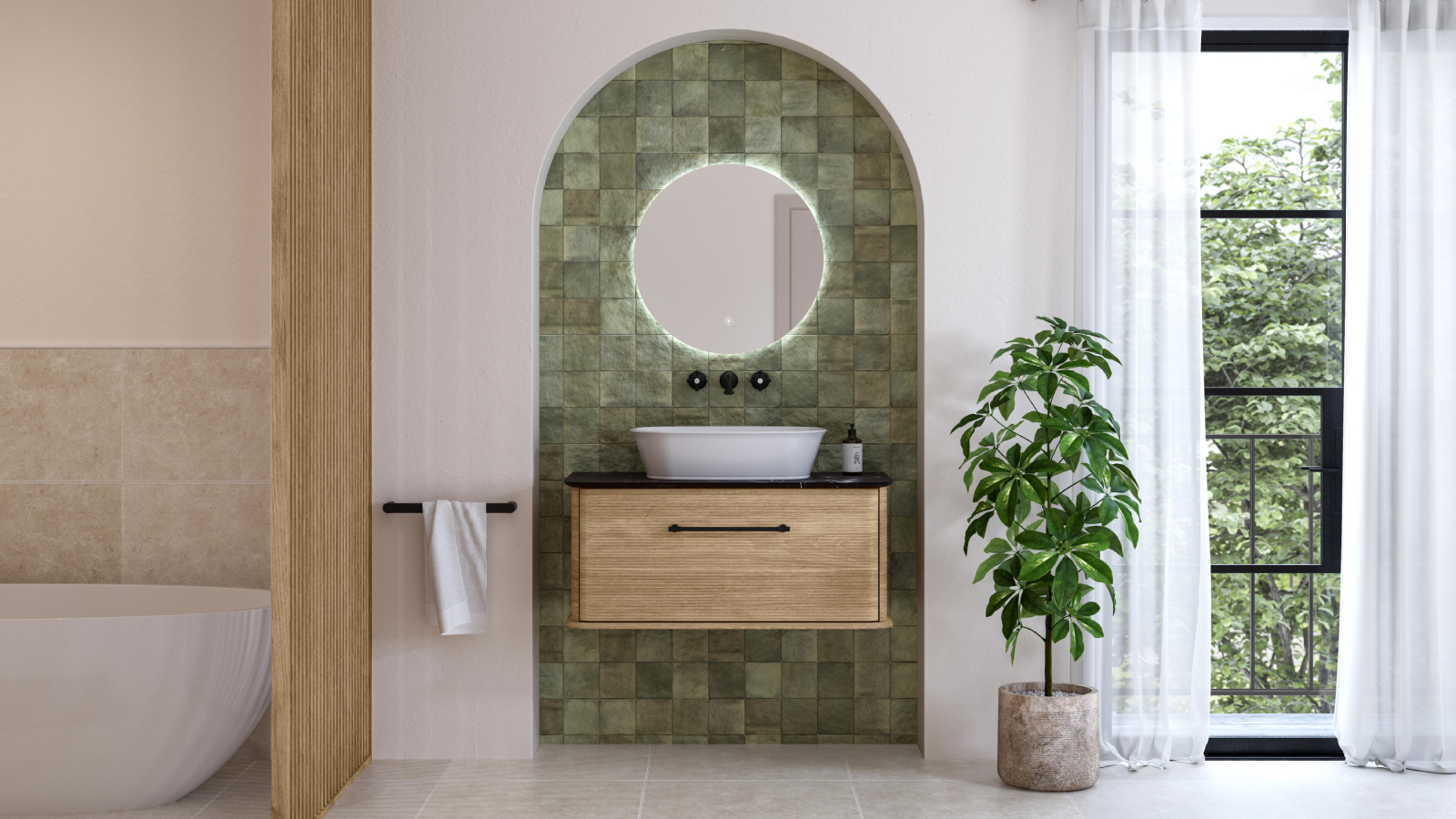
If you've taken on a large scale renovation project, there's a chance the bathrooms will have seen better days. And while some may say avocado bathroom suites are on the up again, renovating a bathroom involves more than just picking the right bathroom suite.
From plumbing and drainage considerations through to lighting and layout, getting your bathroom renovation right involves tackling a number of different areas, making it one of the more complex rooms to tackle in your home.
But, as the first and last room you generally encounter, getting it right can transform your day, helping you feel refreshed and relaxed when you need it the most. So for a successful solution to your ablutions, here's our expert led guide to renovating a bathroom.
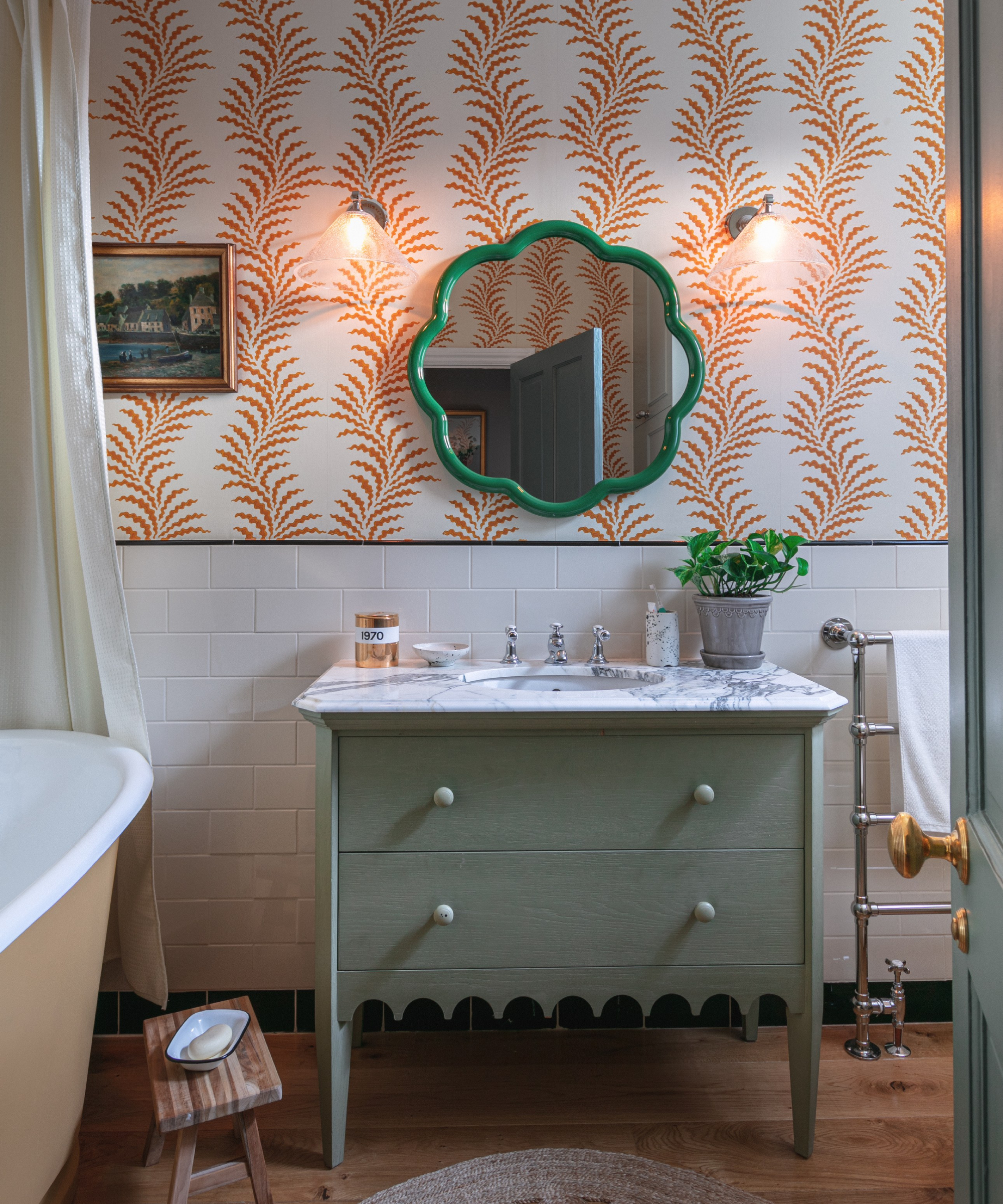
Bathroom renovation schedule of works
Although all bathroom renovation projects are different in their requirements, there tends to be a certain order that tasks are carried out in order to ensure they run smoothly.
If you are wondering exactly what renovating a bathroom will involve, a typical schedule of works for a bathroom renovation will look something like the following list – although will largely be defined by the amount of work you decide to do.
And in terms of how long it will take, "a bathroom renovation typically takes anywhere from two to four weeks, depending on the scale and complexity of the project," says Kate O'Brien, bathroom makeover expert at R2 Bathrooms.
A typical bathroom renovation schedule of works
- Plan ahead to assess your requirements
- Clearly decide on your budget
- Come up with a layout and design
- Choose sanitaryware, brassware and fittings
- Remove old bathroom
- First fix plumbing and electrics
- Wall tiles or other coverings are installed
- Bathroom flooring is laid (be sure that the old floor will take the weight of any new baths)
- Sanitaryware plumbed in and fitted furniture fixed into place
- Second fix electrics
- Final decoration
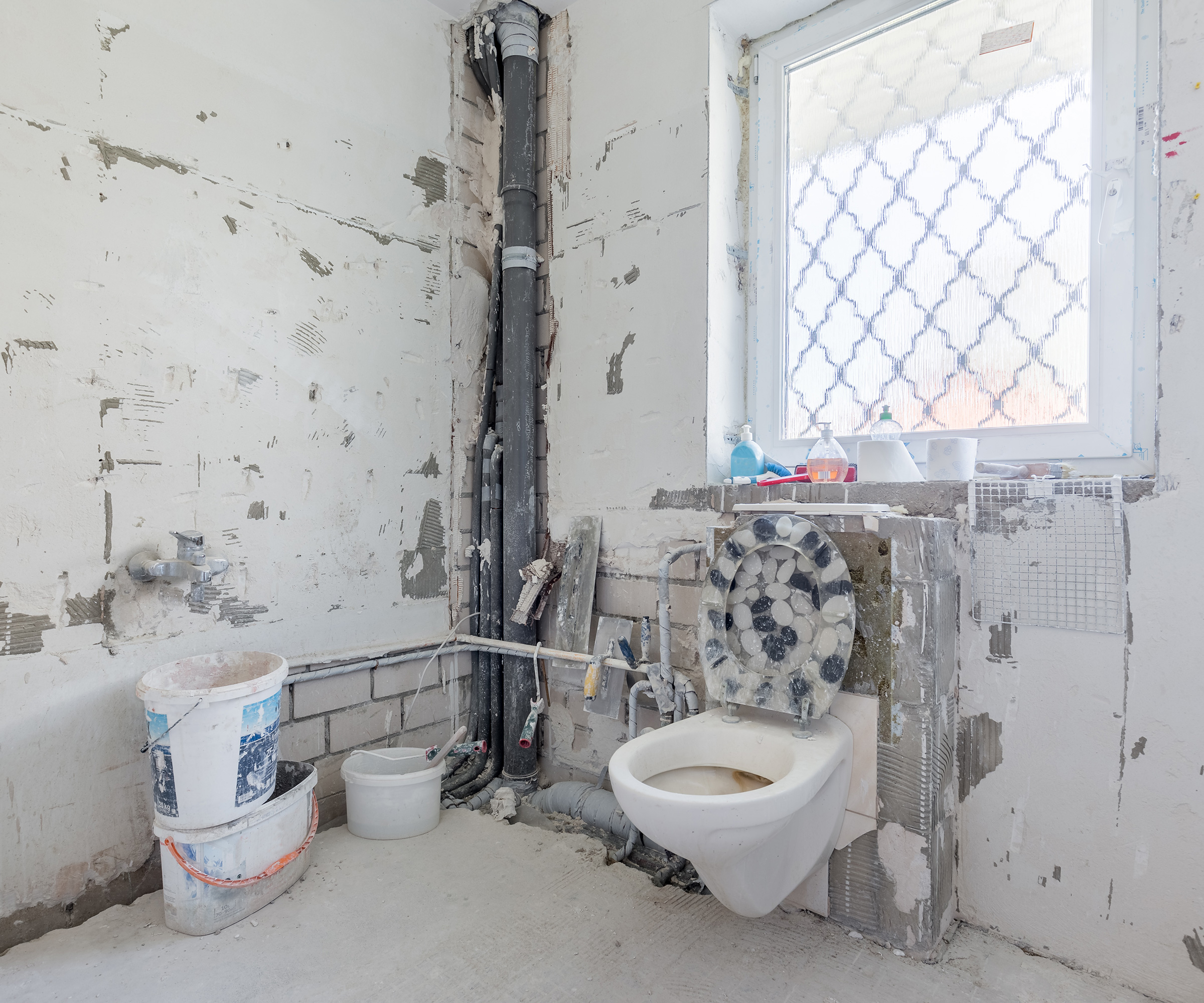

With over 15 years' experience in the interiors sector, Kate is an expert in great bathroom design. At R2 Bathrooms, her inspiring ideas help homeowners to make the most out of their spaces. Currently in the midst of renovating her Bristol home, she knows the joys (and challenges!) of a project first-hand. When she’s not working in the interiors world, she’s on the hunt for the perfect vintage blue plate to add to her collection.
Planning for your bathroom renovation
With an idea of the schedule in mind, the first steps towards getting your bathroom renovation ideas right and keeping your bathroom renovation costs in check are preparation and planning ahead.
"Think carefully about your needs versus your wants," says Kate O'Brien. "Be realistic about the space and budget you're working with and remember good planning at the start will save headaches down the line.
"If you need a quick solution or you're renovating on a budget, focus on updating key elements like taps, tiles, and lighting rather than undertaking major structural changes," she suggests.

However, if you are planning on a larger bathroom renovation, you will also need to make sure that your current walls and floors are able to deal with your new plans.
Wonky walls and uneven floors often crop up when renovating a bathroom, especially in older properties. Once floors are ripped up and tiles chipped off, get the surfaces checked out to see if you’ll need to replaster walls or screed floors before any finished surfaces get laid. This is often an area where a contingency fund gets spent because you don’t know what’s underneath until you reveal all.
You definitely don't want your beautiful bathroom flooring ideas to be ruined by an uneven subfloor that could cause cracks in your new tiles. Additionally, your existing floor might need reinforcing in order to take the weight of new sanitaryware such as heavy cast iron baths.
For a more lightweight bathin a traditional style, try this Freestanding Dark Green Double Ended Roll Top Bath from Better Bathrooms.
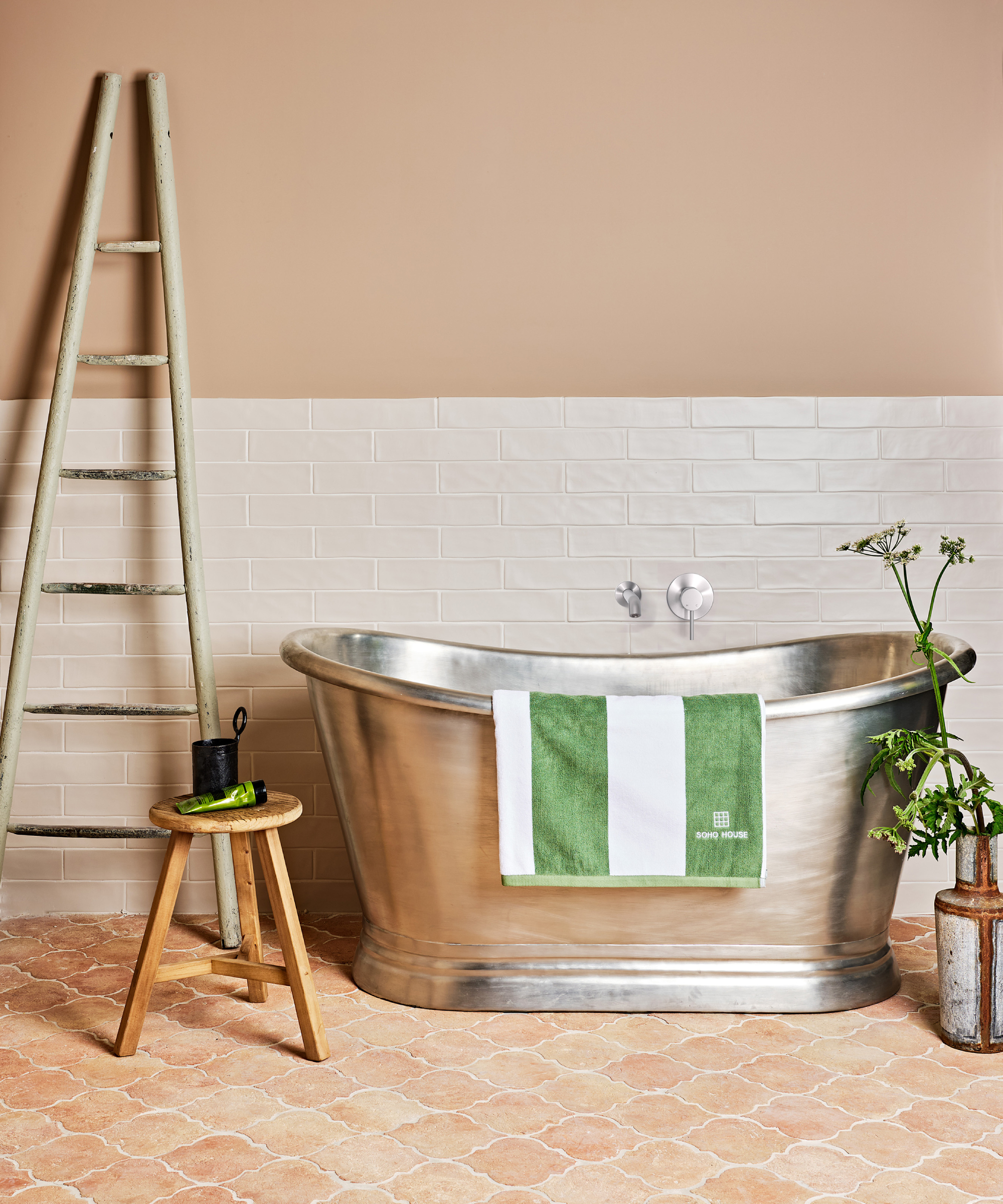
Getting your plumbing and electrical works right in a bathroom renovation
Two of the biggest factors that can impact both your budget and timescale when renovating a bathroom are plumbing and electrics. It's why you need to decide early on if you want a full bathroom remodel or a simpler renovation.
While bathroom remodel ideas will typically involve changing your home bathroom layout, a bathroom renovation can just be an upgrade of fixtures, fittings and finishes but with everything staying in the same place.
"Plumbing can be a hidden cost, so keeping your bathroom layout similar to the original can help keep expenses manageable," confirms Kate O'Brien.
Pay particular attention to the pipework and soil stack. It’s important to establish where it all is and where it all goes. For instance, it can be costly to move a soil stack, so it can often pay to leave the toilet where it is.
Remodelling a bathroom while renovating however, does give you the scope to play around with the design of the space. For example, bringing together a separate WC and bathroom or removing a boiler or water tank from a cupboard to free up more room. The amount of work you do will generally come down to getting the right balance between making the most of your space and not exceeding your budget, so be sure to discuss all the options with your bathroom designer and builder early on.
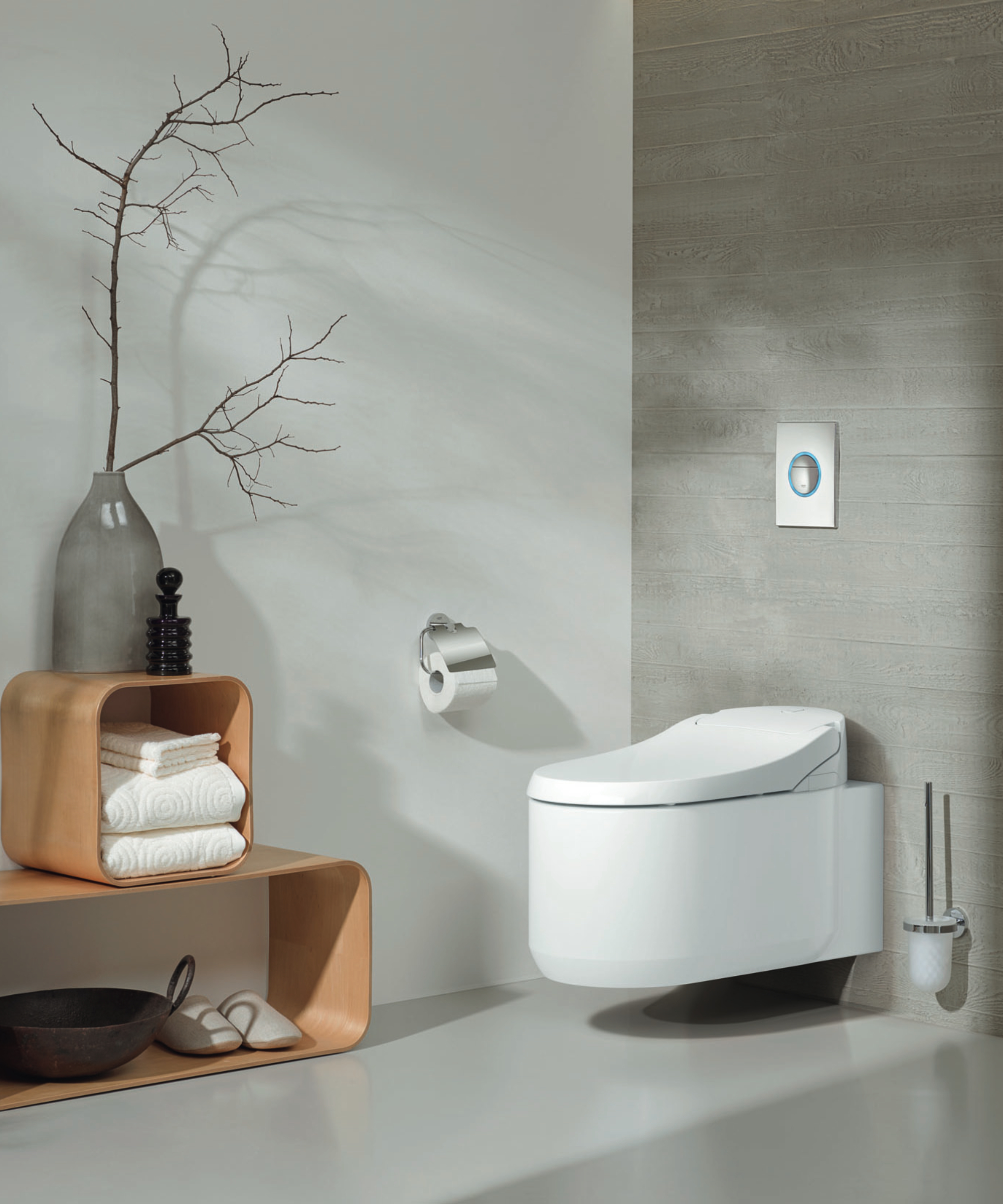
The importance of getting your electrics right
Although your bathroom lighting ideas will naturally form part of your bathroom renovation, it's also important to ensure you will be creating a safe environment. It may well be that your entire property needs rewiring if it hasn't been touched in many years, in which case your bathroom electrics will be updated at the same time.
"Make sure to get electrical systems thoroughly checked before committing to a new design, to avoid unexpected issues or costly delays later on," advises Kate O'Brien. "One of the most expensive changes when renovating a bathroom typically involves extensive rewiring."
If you are adding new lighting, electric underfloor heating or shaving points, you will need to call in an electrician. They should also ensure that the bathroom is 'earth bonded'. This will ensure that if a fault occurs that causes the metal plumbing, bath, taps, radiators or boiler casing to become live, this will not lead to electrocution.
Improve your bathroom lighting as part of your renovation plans
As well as affecting your electrical requirements, a great bathroom renovation is nothing if you can't see in the space or it's overly glaring and bright. It's why embarking on a remodel or renovation opens up the opportunity to get the best bathroom lighting in place.
"When renovating a bathroom, lighting is a key element that needs to be planned early to ensure the space is both practical and inviting," confirms James Kendall, operations director at KES Lighting. "A well-designed bathroom lighting scheme should layer different light sources to create a balanced, practical, and visually appealing space."
James recommends making sure you follow these five key steps to illuminating bathroom renovation lighting.
1. Plan lighting early on: Bathroom lighting should be considered from the outset to ensure wiring is placed in the correct locations before tiling and fixtures are installed. Think about how the space will be used, whether it’s a relaxing spa-like retreat or a busy family bathroom and design the lighting accordingly.
2. Include task lighting: Wall lights positioned beside or above the mirror provide essential task lighting for daily routines such as shaving or applying makeup. Unlike overhead ceiling lights, which can cast unflattering shadows on the face, wall-mounted lights at eye level create even, natural illumination.
3. Layer ambient, task, and accent lighting: However, as well as task lights, a well-lit bathroom benefits from a layered approach. Ambient lighting will provide overall illumination, typically from ceiling-mounted fittings or recessed spotlights, whereas accent lighting adds warmth and depth, highlighting architectural features such as alcoves, shelving, or freestanding baths with LED strip lighting or subtle downlights.
4. Create atmosphere with smart or dimmable lighting: To create a relaxing atmosphere, consider incorporating dimmable lighting, allowing you to adjust brightness depending on the time of day. Smart lighting solutions, including colour-temperature-adjustable LEDs, offer additional flexibility. Cool white light is ideal for morning routines, while warmer tones help wind down in the evening.
5. Make sure you pick lights with the correct IP ratings: Bathrooms have different zones that determine what level of IP (Ingress Protection) rating is required for lighting fixtures. Wall lights near sinks and mirrors should be at least IP44 rated to withstand moisture, while lighting in shower enclosures or above baths requires a higher rating for safety.
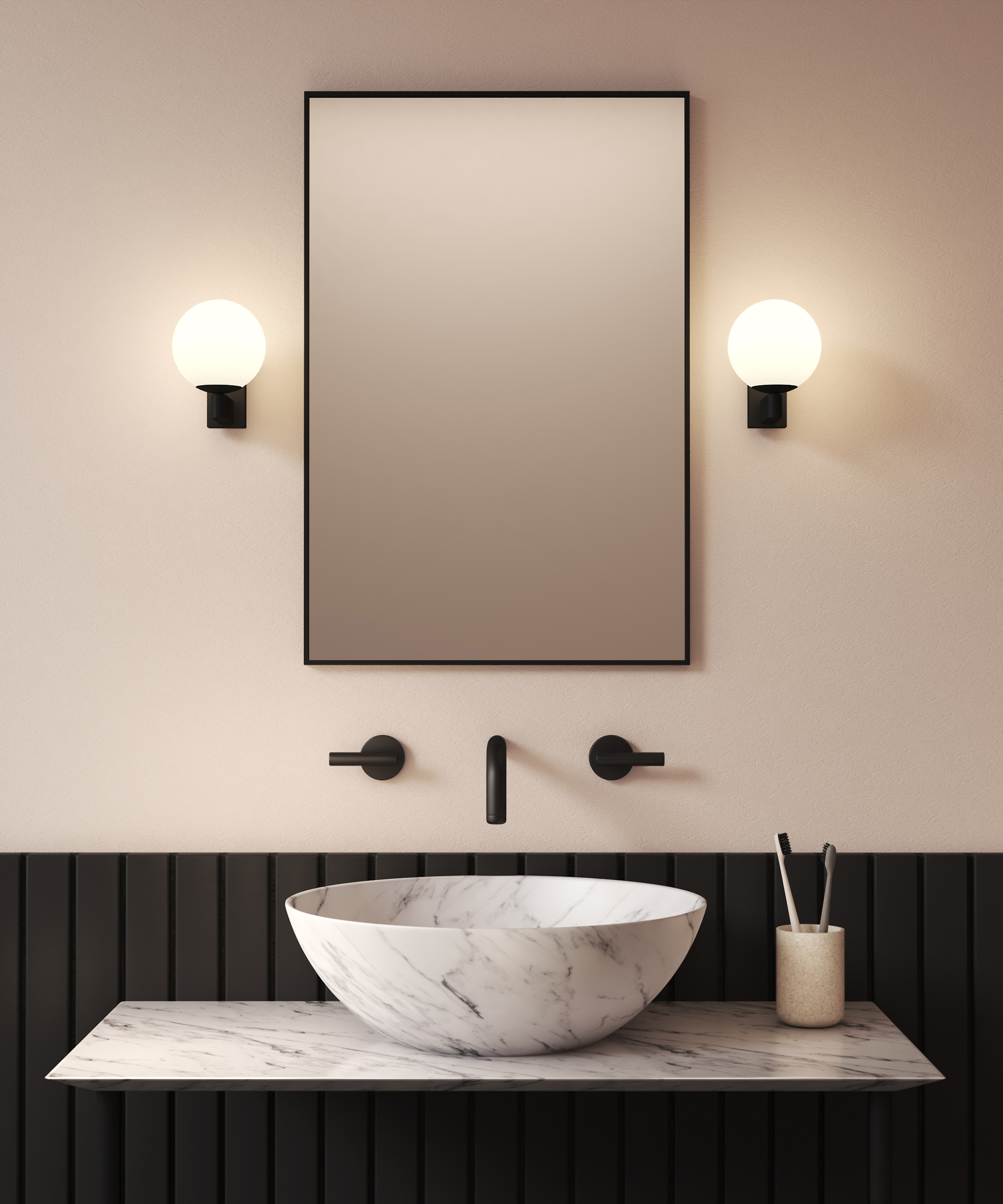

As Operations Director at KES Lighting, James is perfectly placed to offer expert guidance on all aspects of home lighting. From dazzling crystal chandeliers and statement wall lights to designer lamps and elegant drop pendants, James and his knowledgeable team are always on hand to help customers find the perfect lighting for their individual project. Whether you’re simply looking for the right pendant or need a full lighting design service, James understands just how transformative great lighting can be, and has the experience and expertise to help you make the very best choices for your home.
Heating your bathroom renovation
As part of your bathroom renovation plans, it's likely you'll want to consider the current heating in place and how you can improve it. While a wet underfloor heating system may not be practical if you aren't running it everywhere else, electric underfloor heating can be an affordable solution that will warm your new space.
However, with most bathroom ideas now including heated towel rails make sure you choose the right size in order to get the right balance between form and function, says Nick Duggan, managing director of The Radiator Centre
"When renovating a bathroom, remember that choosing the right towel rail isn’t just about looks, it’s about ensuring your space is comfortably heated, too. Getting the sizing right is key," he explains.
"To work out your heating requirements, we always recommend starting with your BTU (British Thermal Unit) calculation. This gives you a clear idea of how much heat output is needed to warm the room effectively. Factors like room dimensions, window sizes, insulation and whether it's a ground or upper-floor bathroom all play a part.
"Once you have your number, you can choose a towel rail that not only meets those requirements but also adds a beautiful design feature to your bathroom," says Nick.
"It’s also worth considering whether you want your rail to be dual fuel," he adds, "giving you the flexibility to warm towels even when the central heating is off. This is perfect for those cooler summer evenings, adding a little touch of luxury all year round."
For a heating solution that also comprises storage, try this Black Vertical Heated Towel Shelf Radiator from Better Bathrooms.
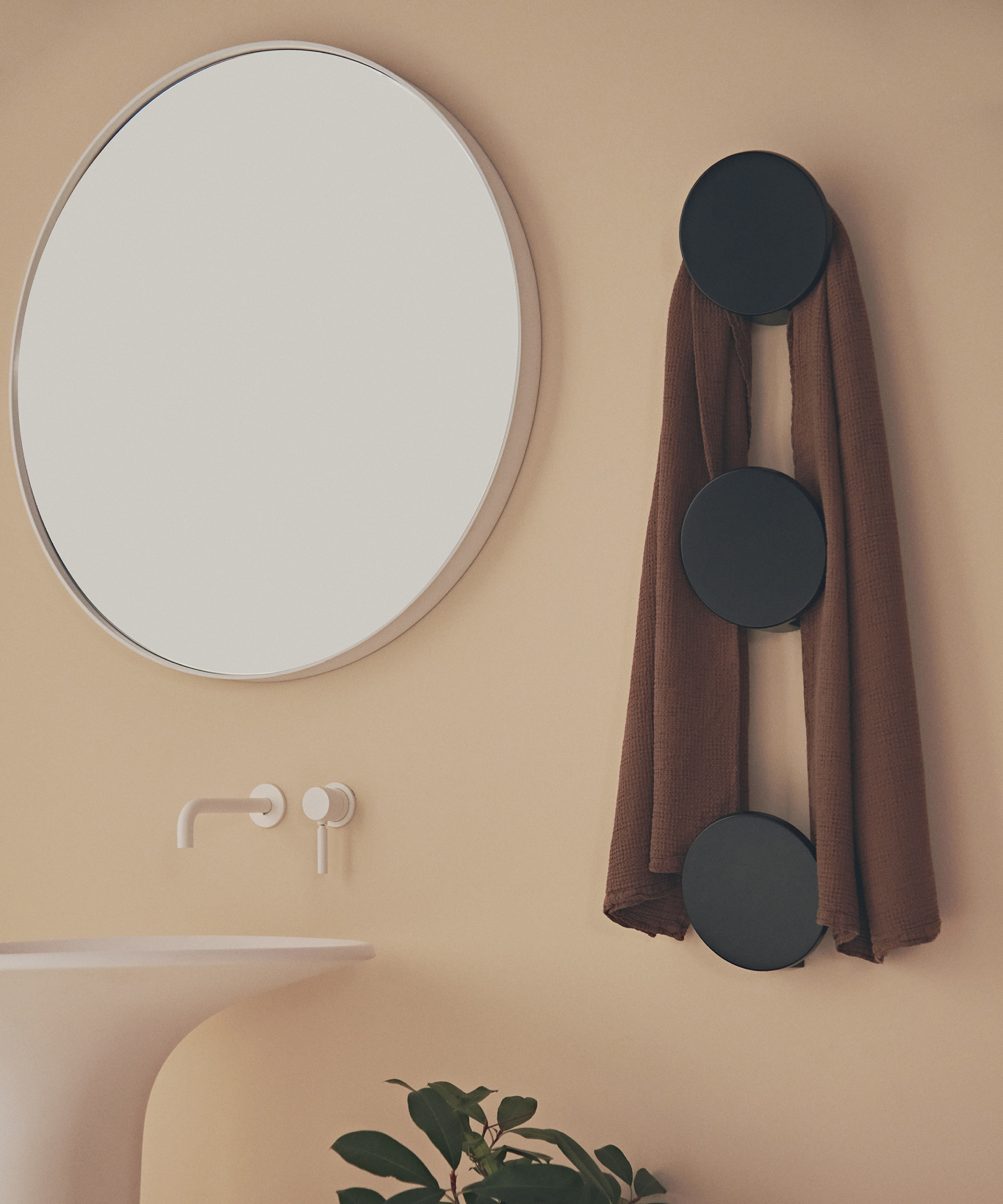

Nick Duggan is the managing director of The Radiator Centre, one of the UK's largest independent suppliers of the very best designer radiators. Nick and the team are passionate about providing a great service and are always happy to help and answer any questions, guiding customers through the process of buying a new radiator.
Deciding on the best bathroom layout
So, with your thoughts now clearer on the main logistics of renovating a bathroom, you can now turn to thinking about a bathroom layout that will best suit your needs.
Begin by taking a look at the layout of your existing bathroom. Note down what areas of the space you like and what works. Think about what you want to change or retain and formulate your new bathroom design ideas based on this.
"If you are upgrading your bathroom you need to make sure the bathroom works for an individual or the whole family – delivering a flexible solution for present and future needs," points out Adam Teal, Country Manager at Kaldewei.
"You need to consider the size of the room, where the basics are, the windows and doors, where will the pipework go and whether you are having radiators or underfloor heating," says Adam. "Once you have these key elements sorted you can then start to plan the specifics, such as where you want the washbasin, whether you want it wall hung or freestanding and think about if you want a shower or bath – or shower over bath ideas."
If you’re happy with the current configuration, then the design is a lot more straightforward as you’ll already have your layout partly done. But, this doesn't mean there isn't room for improvement. Think about how you can create a more functional bathroom, such as walk-in shower ideas if you haven’t already got one, or look at how you could improve your storage with bathroom shelf ideas.
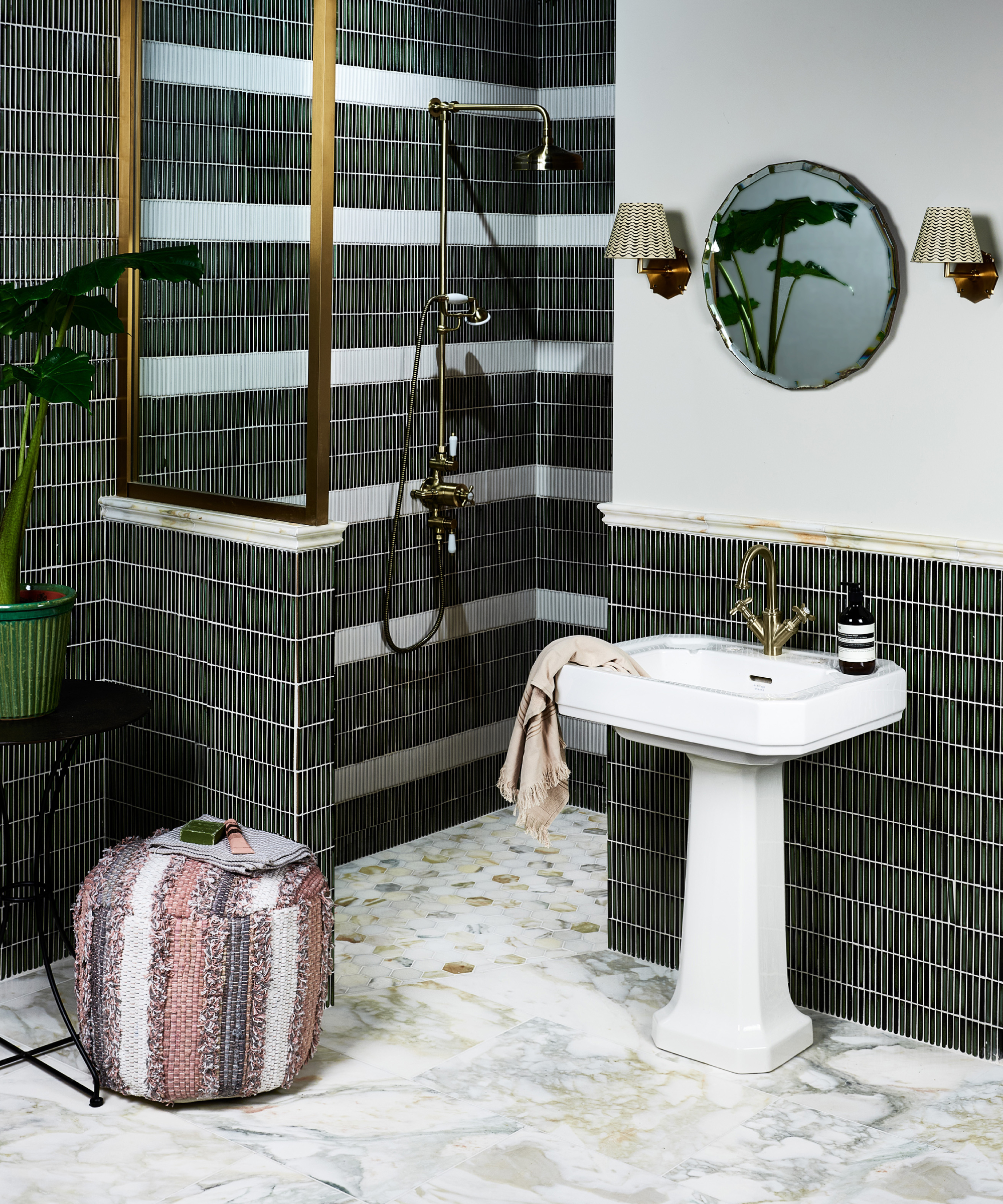

Adam is UK Country Manager for Kaldewei, a German family company that specialises in bathroom solutions that combine modern luxury with sustainability. It has been running for more than 100 years and which is now in its fourth generation.
Choosing new fixtures and fittings for your bathroom renovation
Of course, one of the most enjoyable parts of renovating a bathroom is the chance to choose new sanitaryware, fixtures and fittings.
It is unlikely that the old bath, basin and toilet are going to live up to your idea of what makes a dream bathroom, so you will need to choose new sanitaryware to replace it.
If it is small bathroom ideas you are after, think about introducing wall hung basins and units. They open up the floorspace creating the illusion that the room is bigger than it is. They are also a great choice for those looking for something a little more contemporary.
Do bear in mind however that wall hung sanitaryware often needs reinforcement work to ensure it’s fixed securely so may impact your budget. Concealed cisterns, wall mounted taps and wall-hung toilets require stud walls to fit in the workings so they’re hidden from view. Sometimes they will fit into the cavity of a stud partition wall but often a stud partition will have to be built, which will increase your costs.
If you want to retain a traditional feel or like vintage style bathrooms, classic pedestal basins and close coupled toilets work well, as do high level toilets and roll top, freestanding baths.
Your wall and floor finishes will also play a major part in creating a new look and feel to your bathroom.
"With the increase of wellness and need for a calm space in peoples ever busier lives, natural earthy toned tiles are a popular choice for bathroom floors," says Ben Willis, tile specialist at Willis & Stone. "The use of creams, terracotta tones, muted greens and wood effect tiles all provide a great backdrop for a calmer bathroom.
"In terms of patterns, classic patterns such as herringbone and chevron are a great way of creating a simple but striking finish," he adds. "The herringbone pattern, with its zigzag formation, adds a touch of sophistication and timeless elegance, while the chevron pattern, with its seamless, arrow-like lines, offers a more contemporary and sleek appearance."
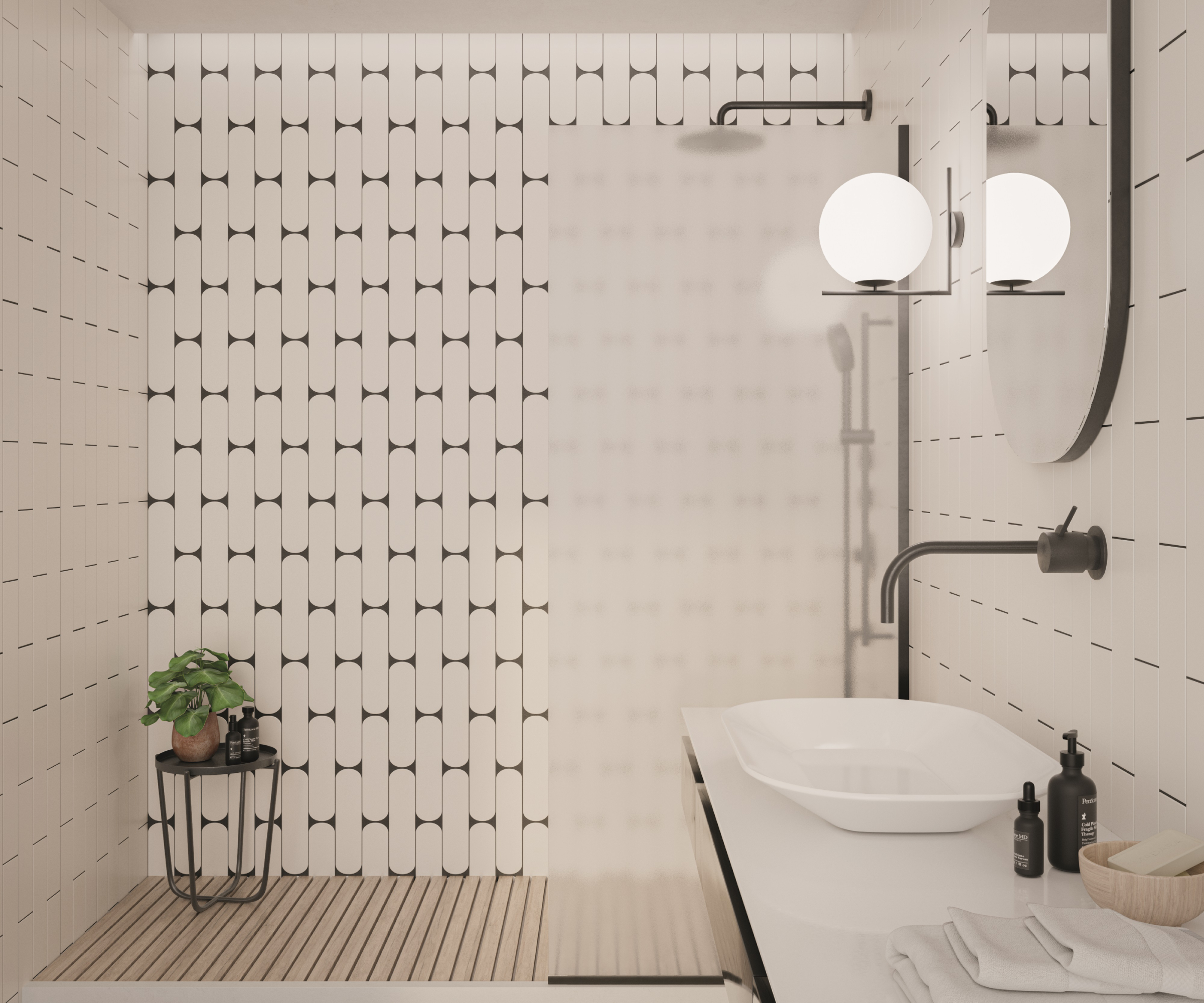
FAQs
How can I renovate a bathroom on a budget?
"Renovating a bathroom can be an investment, however there are a few ways that you can minimise costs," says Richard Ticehurst, Britton brand expert at Bathroom Brands Group. "One of the most expensive aspects of renovation a bathroom can be moving any plumbing fixtures. Aim to keep the existing layout, if possible, to avoid additional costs."
"When it comes to a bathroom renovation make the most of your budget by mixing affordable fixtures and fittings with more expensive statement pieces. Investing in a statement piece will not only deliver a wow factor and focal point to the room, but it will also elevate more affordable fixtures in the room. A freestanding bath or vanity unit makes for a great statement piece.
"If you’re looking for ways to update an existing bathroom, upgrading fixtures such as brassware and accessories can instantly modernise the look of a bathroom. If your bathroom surfaces are looking tired, consider giving them a refresh. Applying a fresh coat of paint or new tiles can make a big difference in the overall look of the space," continues Richard.
"You don’t need a complete renovation to create a sanctuary within your own home," agrees Brian Athey, managing director of Renaissance at Home. "With a few key elements and some clever styling, you can create your own haven of relaxation.
"Small details make a big difference when it comes to the look and feel of a relaxing bathroom," continues Brian. "If your towel rail has seen better days, for example, or is no longer functioning like it should, it might be time to invest in a new one.”
What will add the most value to a bathroom renovation?
"Features like underfloor heating, well-designed storage, and a stylish but neutral colour scheme typically provide the best return on investment," says Kate O'Brien.
"Bathrooms that look clean, modern, and uncluttered will always appeal to potential buyers," she adds, so if you are renovating a property to sell, be sure to make choices based on having a broader appeal, rather than a specific or individual taste.
"Opt for classic designs over trends that could date quickly," she adds. "High-quality materials and timeless shapes like simple chrome taps, traditional white ceramics, or classic tile choices are always a smart investment.
"Materials like brushed brass or matte black can feel contemporary yet timeless, ensuring your bathroom remains stylish for years."
A bathroom renovation is a really exciting project that will transform the way you use and feel about your home. If you are worried about new bathroom costs, do think about carrying out some of the work on a DIY basis – there is plenty you can do to help your budget go further.
Straightforward jobs include ripping out the old bathroom and chipping off tiles, to final decoration tasks such as painting and tiling a bathroom wall. Some keen DIYers also try their hand at some of the simpler plumbing jobs. Beware making bathroom renovation mistakes though such as tackling bathroom electrics yourself – it is safer (and sometimes required by the building regulations) to call in the professionals.
Get the Homebuilding & Renovating Newsletter
Bring your dream home to life with expert advice, how to guides and design inspiration. Sign up for our newsletter and get two free tickets to a Homebuilding & Renovating Show near you.
Michelle was Homebuilding & Renovating magazine's Deputy Editor. With an editorial career spanning more than 18 years, Michelle spent time working on educational magazines and websites until her career took an exciting turn into the world of homes and interiors. Working on sister titles Real Homes and Period Living, she then joined the Homebuilding team in November 2018.
She’s just completed her second kitchen renovation project and bathroom renovation, armed with an ever-growing knowledge of homebuilding advice and design inspo (and a Pinterest board or two, of course).

